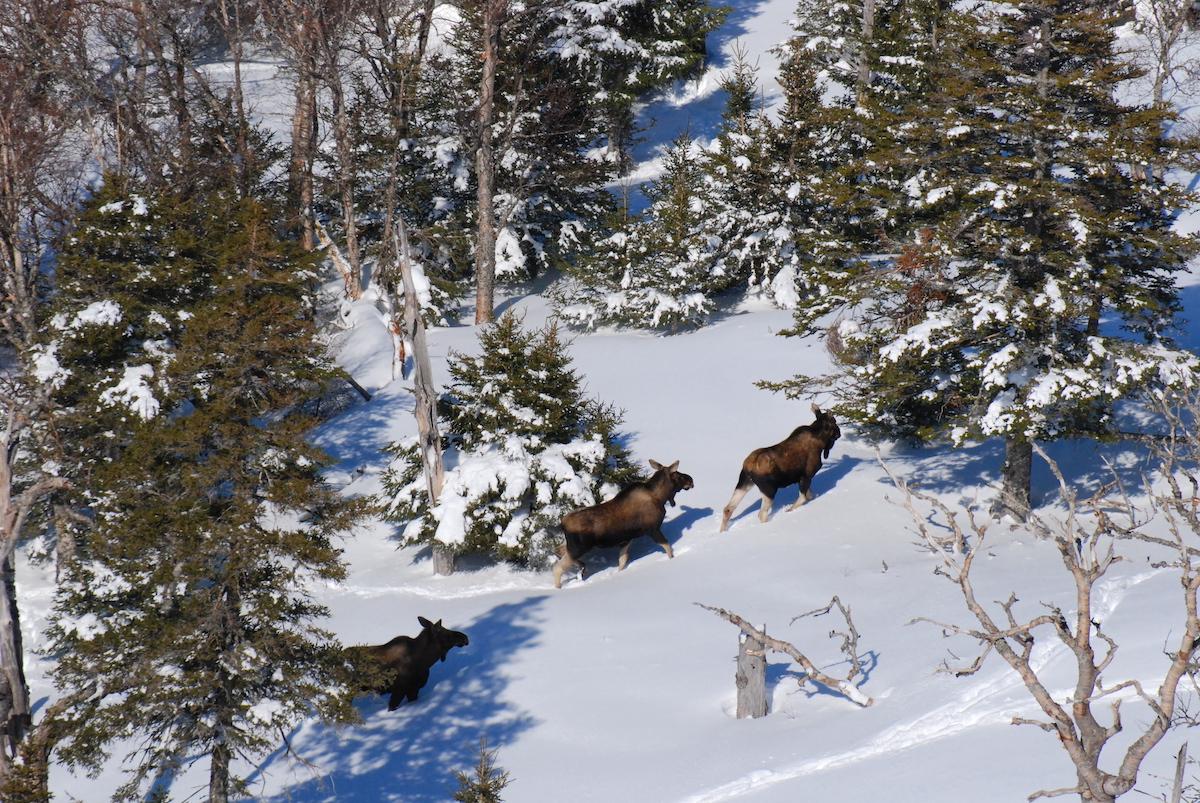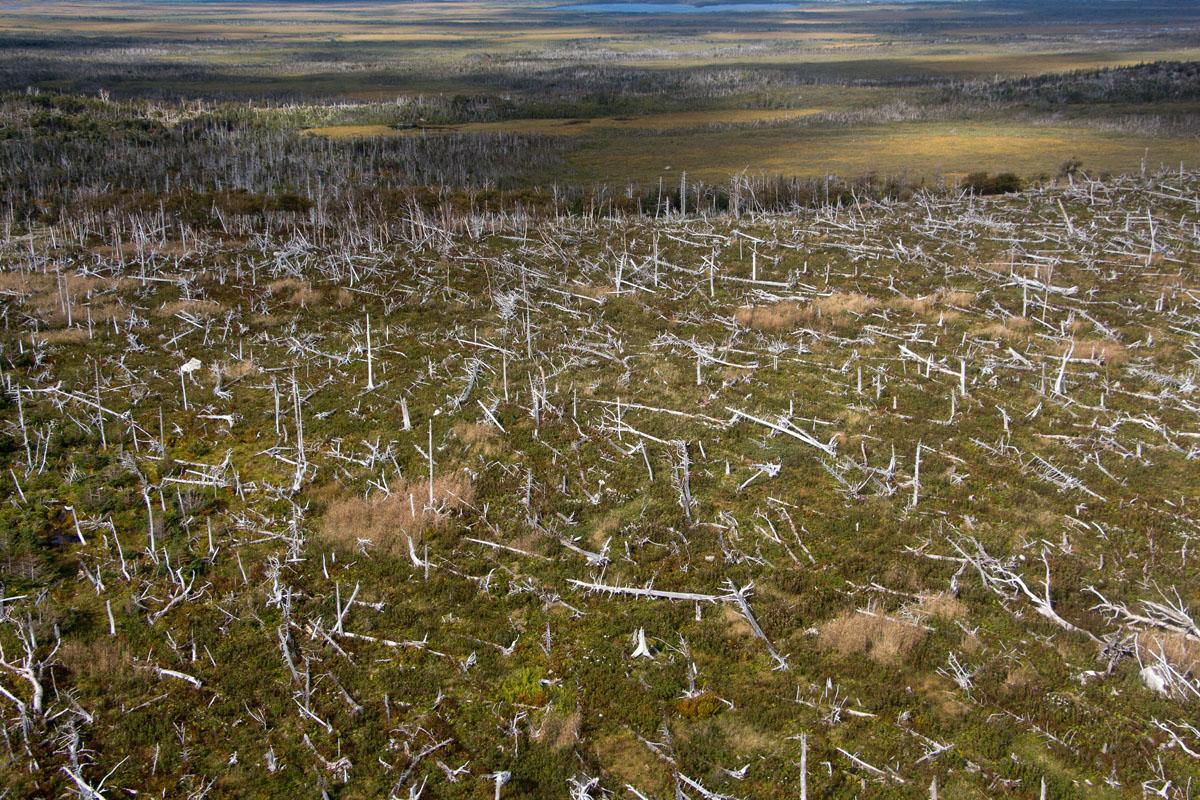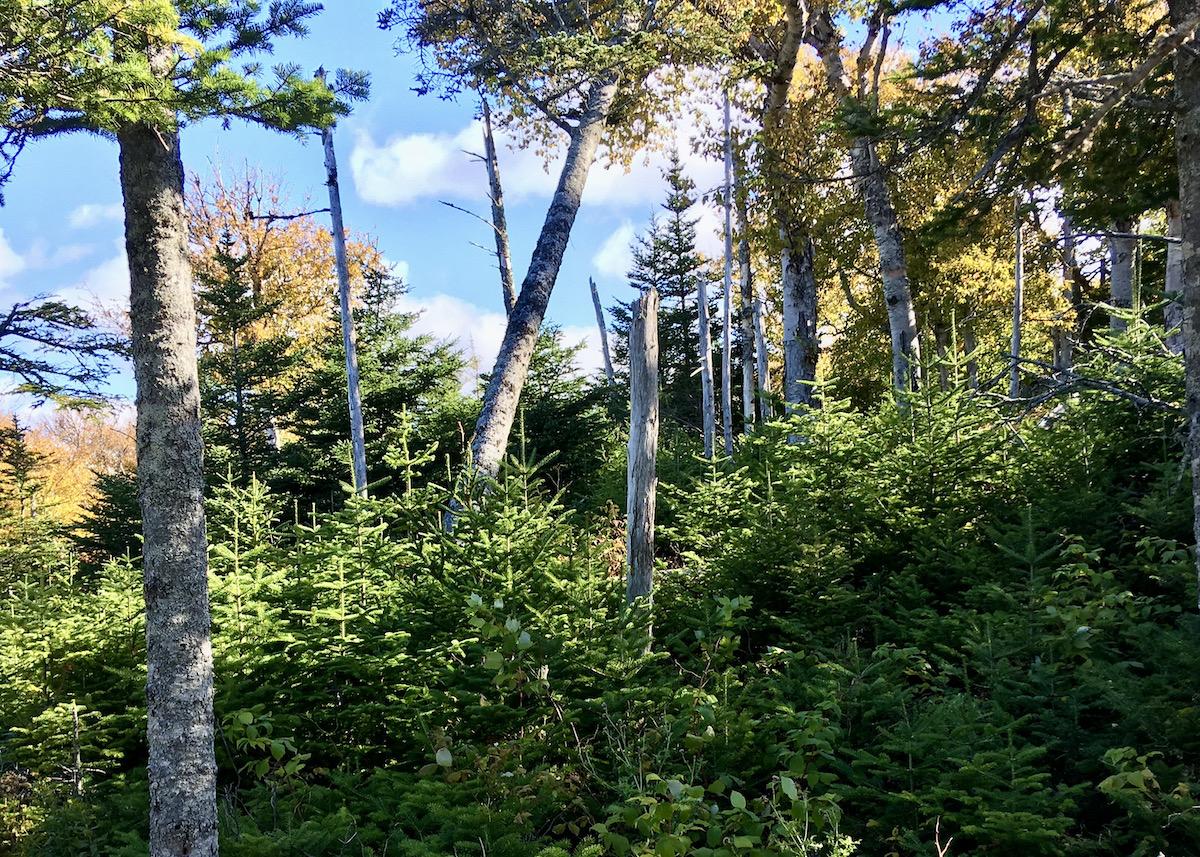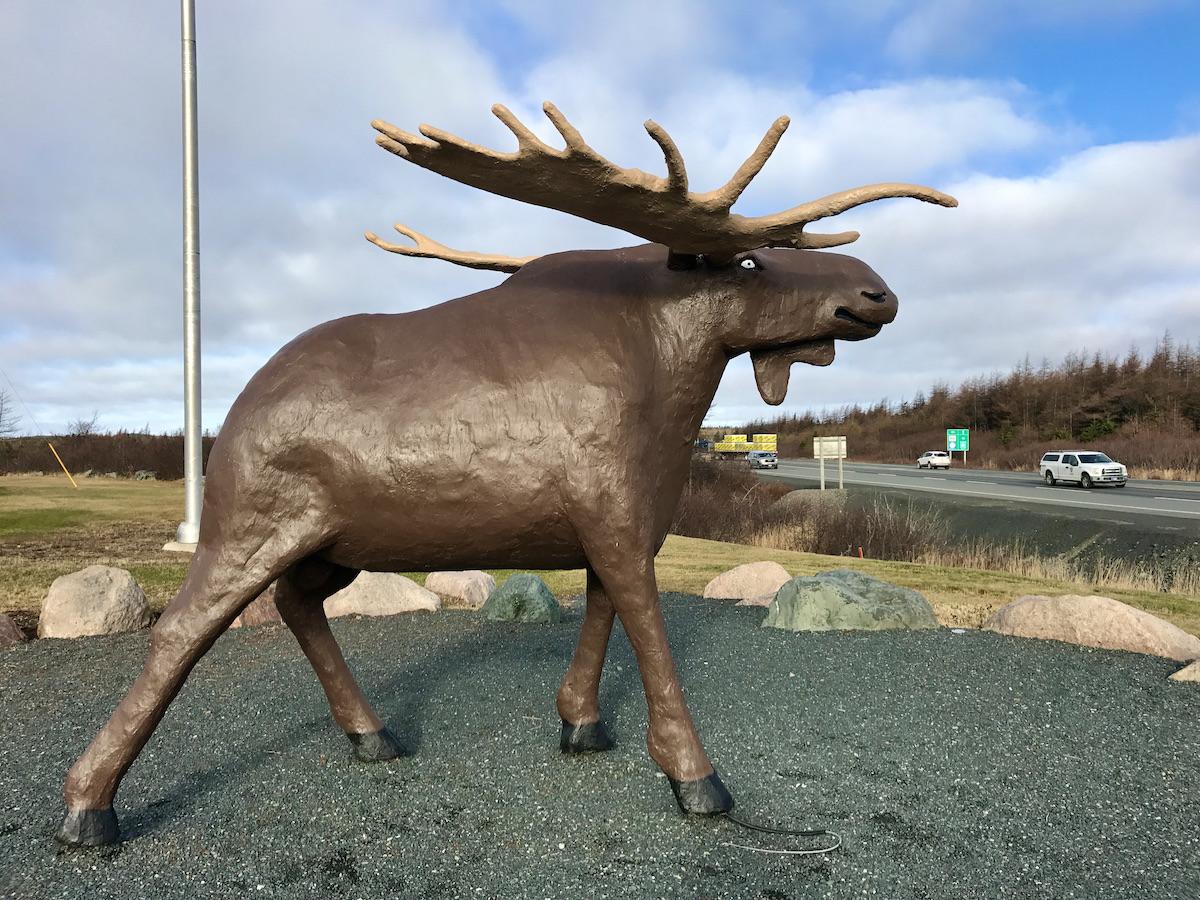
An aerial view of moose in the snow at Gros Morne National Park/Parks Canada
Gros Morne National Park has wrapped up its annual public moose hunt and says that a decade into the unusual program, its forest is starting to recover from the effects of over-browsing.
Shawn Gerrow, ecologist for the Parks Canada’s Western Newfoundland and Labrador Field Unit, estimates the park now has about 2,000 moose, or about two per square kilometre (0.4 square mile). That’s down from a peak number of 7,000 and a time when “those moose were essentially eating themselves out of house and home because we don’t have any predators, like wolves, for moose.”
Established in 1973, Gros Morne is on the west coast of the island of Newfoundland in a province that includes the mainland region of Labrador. It’s a UNESCO World Heritage Site because it shows the process of continental drift, where deep ocean crust and the rocks of the earth's mantle lie exposed. Glacial action has created coastal lowlands, alpine plateaus, fjords, glacial valleys, sheer cliffs, waterfalls and lakes. The park’s 1,805 square kilometres (697 square miles) include lively coastal villages and “wet” boreal forests dominated by Balsam firs.
Two moose — a Canadian wildlife icon — were introduced to Newfoundland in 1878 and another four in 1904 in a government bid to develop the island’s interior, attract big game hunters, sustain mining and forestry workers, provide a fresh meat source and create recreational and economic opportunities. It’s now a dietary staple that’s found in homes, in restaurants and at community events, according to the Heritage Foundation of Newfoundland & Labrador and the 2015-2020 Newfoundland and Labrador Moose Management Plan.
With few predators, plus an abundant food supply, Newfoundland’s moose population climbed to 140,000 by the late 1990s. Although the province estimates that number has dropped to 112,000 (not including national parks), both Gros Morne and Terra Nova National Park have more moose than their forests can support and say forest diversity is in decline. Gros Morne is driven by insect and wind events, like a spruce budworm outbreak in the 1970s. Fires, which are a healthy part of the forest lifecycle, are rare.

An aerial view of landscape impacted by moose over-browsing at Gros Morne National Park/Parks Canada
According to the National Wildlife Federation, moose are the largest member of the deer family, stand six feet (1.8 metres) tall from hoof to shoulder and weigh up to 1,000 pounds or 450 kilograms. They gravitate to cold climates and forested areas with streams and ponds. These herbivores — moose is an Algonquin term meaning “eater of twigs” — are usually too tall to eat grasses, and so feed on trees, shrubs and plants, especially Balsam fir and birch.
Gerrow says the Gros Morne moose “have been choosing how that forest evolved.” Some areas of the park are now so open, with just “shrubby stuff” that the moose can’t eat, that visitors mistakenly refer to the landscape as savannah. Sixty-five square kilometres (25 square miles) haven’t regenerated and this impacts species such as the threatened Newfoundland population of the American marten and various birds.
“It’s a really important forest,” stresses Gerrow “and that’s what the park is here to protect.”
Hunting isn’t usually allowed in national parks, but Gros Morne — in consultation with a stakeholder group made up of hunters, trappers, NGOs, the community and the province — launched a trial project with 500 licences in a small portion of the park in 2011. That annual licence number climbed to 1,050 until hunters successfully harvested more than 4,500 moose and the park reached its target population of 2,000 moose or two per square kilometre.
Modelling suggests that 200 to 300 moose still need to be removed each year, and Gerrow points out that “it’s not an easy hunt” and hunters only have a 50 percent success rate.
A government survey showed that many people want to see moose numbers stay the same or even rise. Some hunters fear the population is declining too rapidly. They don’t want the food source “to go the way of the cod,” which was fished for nearly five centuries until the stocks collapsed and the government declared an indefinite moratorium on the fishery in 1992. “There’s no worry on that front, I’m afraid,” says Gerrow, adding that people whose families hunted in the Gros Morne area before it became a park have been grateful for the chance to hunt there again.

Signs of new forest life as regeneration takes place at Gros Morne National Park/Parks Canada
Gros Morne is in Moose Management Area 2E and it opens about 97 per cent of its land to the hunt. This year, Parks Canada allowed 500 “either-sex” licences through the random provincial draw system as well as 75 licences for not-for-profit organizations, in a hunt that was phased in beginning September 19 and ran to January 24. More people apply for the draw than receive licences, but not all the non-profit tags are used. Hunting was allowed in three zones but not close to trails, infrastructure or a construction project.
The park forbids ATVs, including for carcass retrieval, because they can irreversibly damage terrain and vegetation, especially on wetlands and bogs. It allows some snowmobiling and motorized and non-motorized boats. Permits can be requested for access to the backcountry by private float plane or helicopter. Between 2015 and 2019, Gros Morne even flew select hunters into “really inaccessible, hard to hunt, extremely high density” areas, says Gerrow.
The rules for Parks Canada’s ecosystem management program are different that provincial hunting regulations. Harvesters need the usual outdoor identification card and government big game licence, but also a Parks Canada Superintendent’s permit that comes with a detailed map. Only moose can be harvested and there are tougher rules about when firearms must be cased or securely wrapped and tied. Open fires and tree cutting are banned, and breaking the rules means charges under the Canada National Parks Act. An either-sex licence means bulls, cows and yearlings can be taken.
“The moose hunt has only been happening for 10 years so we are in the early stages of recovery of vegetation in areas as it takes trees time to grow,” says Gerrow, who's happy to be seeing a new diversity of woody plants and a healthy understory.
“You can still see moose in the park, depending on where you’re at,” he adds. “There’s still around 2,000 — that’s a lot of moose.”

An hour south of Terra Nova National Park at the Goobies Big Stop travel plaza, a moose sculpture keeps watch on the TransCanada Highway/Jennifer Bain
About four hours east of Gros Morne at Canada’s most easterly national park, Terra Nova National Park also has an “unnaturally high” moose population and a harvesting program that began October 13 and runs to January 31.
This traditional island wilderness park with abundant wildlife is in Moose Management Area 28A and allows 60 licences through the provincial draw and another 30 licenses that are given directly to not-for-profit organizations who don’t pay fees and designate hunters to hunt on their behalf.
Last year, COVID-19 travel restrictions kept Americans and most Canadians out of Newfoundland. The provincial government has carried over 25 percent of unsold non-resident moose licences to the 2021 hunting season to help offset the lost revenue of outfitters.
Newfoundland is dotted with moose crossing warnings, as well as signs that tally up the number of moose-vehicle accidents. It’s especially treacherous from May to October and between dawn and dusk as moose feed on roadside vegetation and flee the woods to escape flies. Each year typically brings up to 600 accidents, several serious injuries and one human fatality.



Comments
Replacing natural ecological processes with this kind of "active management" is a never-ending thing. And it sets a bad precedent, creating a constituency for this "management" that will vehemently resist rolling back this practice.
This is what happened when Massachusetts began allowing "controlled hunts" for deer in the Quabbin public reservation in Massachusetts in 1991. The hunt, in a public reservation where it had not been allowed before, was authorized as
Massachusetts wildlife managers claim that this hunt has been a big success in reducing overbrowsing of herbaceous plants. But thirty years later, they insist that this "controlled hunt" is still necessary each year. They have created an entrenched constituency of deer hunters who would no doubt resist ending the hunt. Meanwhile, the state is logging the area, which creates more deer habitat, and it promotes hunting of coyotes and bobcats, which could help to moderate the deer population. https://www.mass.gov/info-details/quabbin-reservation-deer-hunt
There is a strong need by humans to "manage" and control nature. I am sure the biologists involved in the Gros Morne and Quabbin hunts have the best of intentions. But by buying into the misguided idea that humans can and should "manage" nature, they are perpetuating the outdated North American model of wildlife "management," which has been an abject failure. https://www.mtu.edu/news/stories/2011/june/environmental-scientists-call...
The long-term, permanent solution to this problem is obvious -- end the hunts and reintroduce wolves.